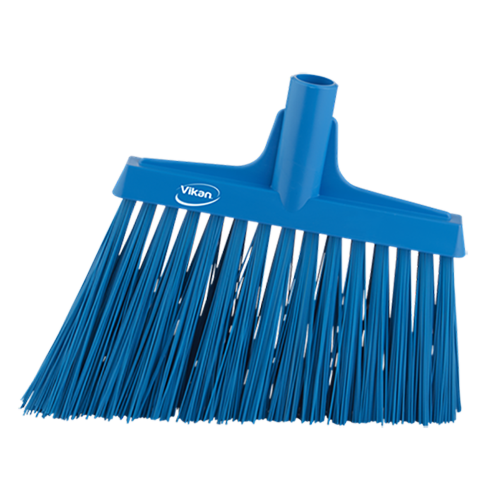Flagged vs Unflagged Bristles
Written by Adam Serfas

Floor brushes, either push brooms or upright brooms, can come with either flagged or unflagged bristles. Which type you choose depends on debris you are sweeping up and the condition of the floors. Floor brush bristles can be made with animal hair, vegetable fibers or plastic bristles. This discussion focuses on plastic bristles, as they are recommended in food processing, or anywhere where hygienic standards are high.
To view this content as a printable pdf click here.
Flagged Bristles
Flagged bristles have splintered, bushy ends. This turns a single bristle into many bristles.
These bristles are best suited for:
Sweeping Fine Powders
The split ends of a flagged broom or brush are ideal for sweeping any fine powders such as flour in a bakery.
Sweeping In Dry Areas
When sweeping in dry areas to pick up granules, dust, and other light debris, flagged bristles are best.
Sweeping On Smooth Floors
Flagged bristles work well on smooth floors such as concrete or hardwood that do not have grout or uneven places.
Unflagged Bristles
Unflagged bristles have straight ends and are generally stiffer than flagged bristles.
These bristles are best suited for:
Sweeping Large Debris
Larger debris will not be properly picked up by softer, flagged bristles. Stiff, unflagged bristles are more rigid and better suited to pushing heavier debris.
Sweeping In Wet Conditions
Floors that are oily or often moist require a broom with unflagged bristles to sweep as these bristles absorb less liquid and the ends are less likely to become matted.
Sweeping On Rough/UnevenFloors
Rough and uneven floors such as tiled floors require more aggressive unflagged bristles to reach into small grooves and spaces, where dirt and debris are commonly trapped.
It is common in many facilities to require both bristle types. Ask your supplier for samples if you are unsure of which best suits your unique needs.


